The places to visit in Mount Abu in August feel different from any other month. Rain brings the hills to life, and the earthy scent stays in the air after every downpour. Clouds drift low across old temples and forest trails, turning familiar spots into quiet escapes. The only hill station in Rajasthan, Mount Abu, becomes cooler, greener, and far less crowded in August. Whether you’re watching wildlife, exploring heritage temples, or just sitting by the water, this month shows you Mount Abu in its calmest and most vivid form.
10 Places To Visit In Mount Abu In August
From ancient temples to pristine lakes, here is the list of the best places to visit in Mount Abu In August.
1. Dilwara Temples
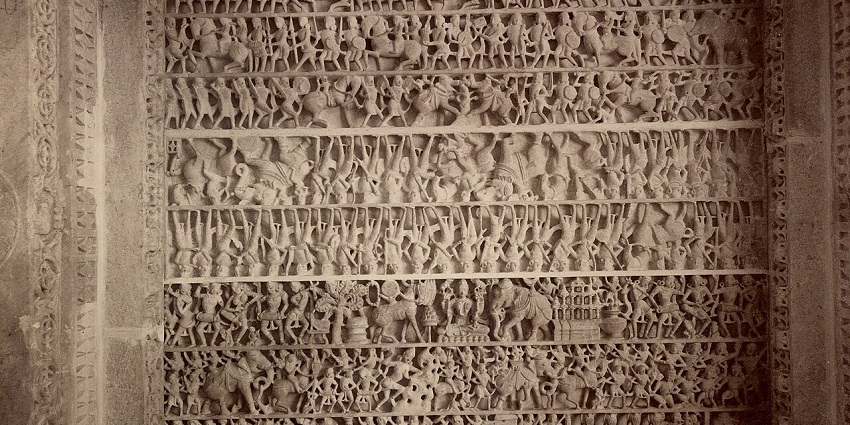
Photo: Lala Deen Dayal / Wikimedia Commons
The places to visit in Mount Abu in August include sites that blend heritage and calm, and Dilwara Temples are among the finest examples. These 11th-13th century Jain temples are not just places of worship but masterpieces of marble work. You’ll notice how the carvings remain sharp even after centuries, from ceiling details to intricate lotus symbols on pillars. Each temple in the complex, like Vimal Vasahi and Luna Vasahi, holds its own story, dedicated to different Tirthankaras. You can walk around slowly, read old inscriptions, and speak with locals who help preserve the temple.
Timings: 12 PM – 6 PM for tourists
Nearby Attractions: Achalgarh Fort, Mount Abu Bazaar
2. Nakki Lake
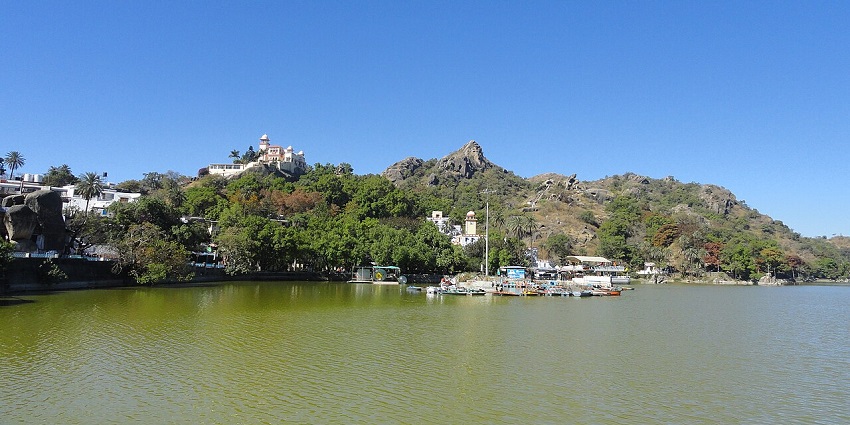
Photo: Arunsbhat / Wikimedia Commons
Nakki Lake stands at the heart of the places to visit in Mount Abu in August, and the rains turn its surroundings into a green frame of hills and rocky cliffs. The lake fills up during this month, making boating a peaceful and scenic experience. Paddle boats and shikaras glide across the water with small flowers blooming near the corners. You’ll find benches around the lake perfect for a quick break with hot corn or tea from nearby stalls. In the evening, the lights around the lake reflect on the surface, and local musicians sometimes perform near the boating area.
Timings: Boating opens from 9:30 AM – 6 PM
Cost: ₹100 – 300 per person for boating, depending on the type
Nearby Attractions: Toad Rock, Sunset Point
3. Guru Shikhar
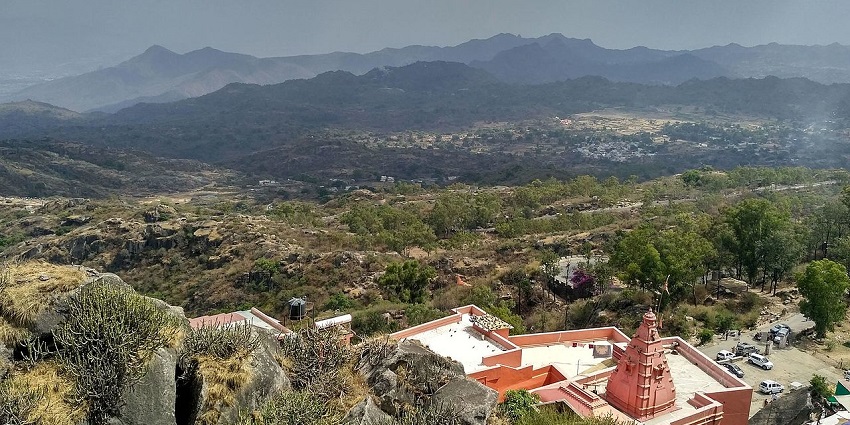
Photo: Tejaspatel1 / Wikimedia Commons
At 1,722 metres above sea level, Guru Shikhar is the highest peak in Rajasthan and one of the most striking places to visit in Mount Abu in August. The drive up is full of twists through cloud-covered forest roads, and the last stretch must be done on foot. In August, every step brings cooler air, and the view from the top is often a dramatic mix of sun rays breaking through fog. The peak houses the temple of Guru Dattatreya, built directly into the rock face. Even if you’re not here for the temple, you’ll want to spend time just looking at the landscape.
Timings: 8 AM – 6:30 PM
Nearby Attractions: Mount Abu Observatory, Peace Park
4. Mount Abu Wildlife Sanctuary
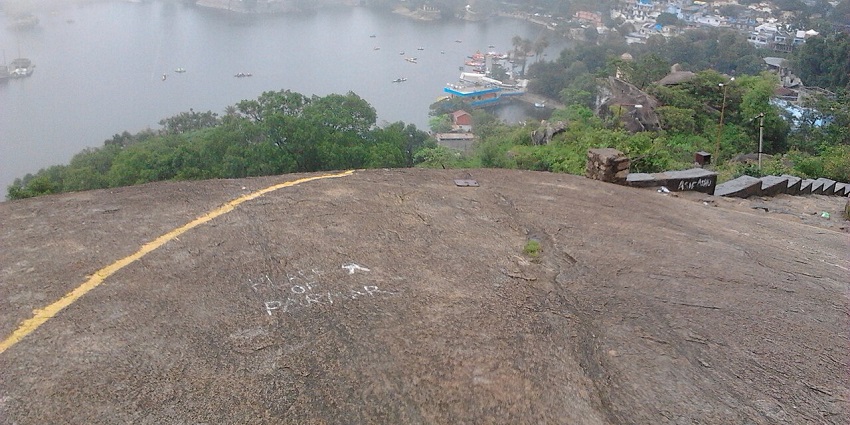
Photo: Rex Chauhan / Wikimedia Commons / Image For Representation Only
Among the most refreshing places to visit in Mount Abu in August, the wildlife sanctuary stands out for its raw, rain-fed greenery. The forest looks fuller, and the trails feel damp but alive with sounds of birds, insects, and the occasional rustle of small animals moving. This is one of the oldest mountain ranges in India, and the sanctuary stretches over the rugged Aravalli hills, covering more than 280 square kilometres. In August, leopard sightings are rare but possible if you take an early morning jeep safari. More commonly, you’ll spot langurs, sambars, wild boars, and several bird species that thrive in the monsoon.
Timings: 9 AM – 5:30 PM
Cost: ₹100 for Indian citizens, ₹300 for foreigners. Jeep safari charges extra
Nearby Attractions: Trevor’s Tank, Salgaon Watch Tower
5. Achalgarh Fort
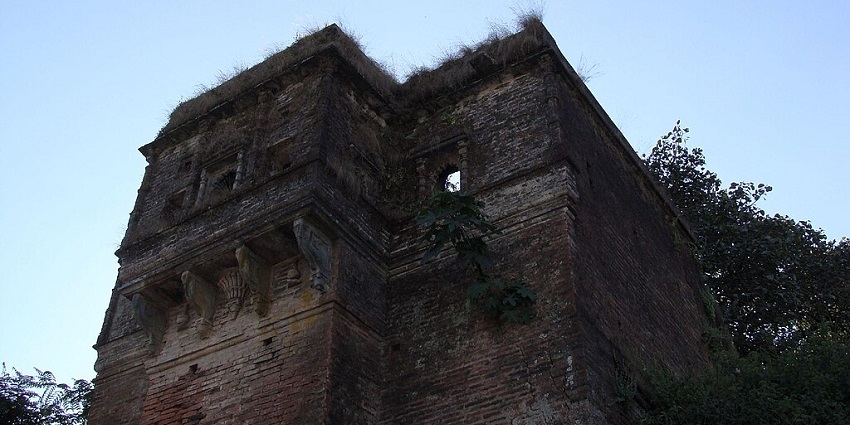
Photo: WikiEditorAsb / Wikimedia Commons
Achalgarh Fort feels older than its stones suggest, and in August, the surrounding hills dress up in thick green. It’s one of the more quiet yet powerful places to visit in Mount Abu in August, especially for those drawn to history and landscape together. Built originally by the Paramaras and later reconstructed by Maharana Kumbha in the 15th century, the fort walls are weathered but still stretch wide across the hilltop. The main draw inside is the Achaleshwar Mahadev Temple. Its unique brass Nandi statue and a natural Shiva linga are believed to sit above a bottomless pit.
Timings: 8 AM – 6 PM
Nearby Attractions: Achaleshwar Mahadev Temple, Mandakini Lake
6. Universal Peace Hall
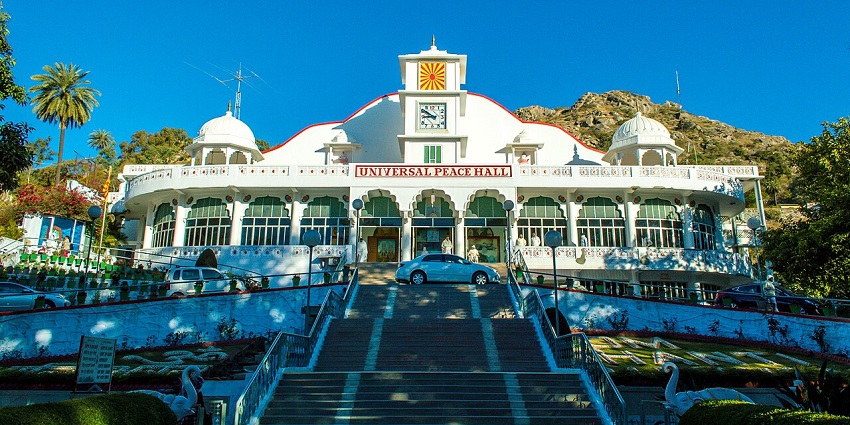
Photo: Bkburhanali / Wikimedia Commons
Among the places to visit in Mount Abu in August, Universal Peace Hall offers something entirely different. It is part of the Brahma Kumaris spiritual campus and acts as their main assembly hall, welcoming thousands every year. The monsoon brings cooler air and cleaner surroundings, making it an ideal time to sit inside and listen quietly. The hall is built in a simple, open style that suits its purpose. Volunteers give short introductions to their work, and guided tours are offered in multiple languages. What makes this place memorable in August is the stillness inside, especially when it’s raining outside.
Timings: 9 AM – 6 PM
Nearby Attractions: Brahma Kumaris Headquarters, Shantivan
7. Toad Rock
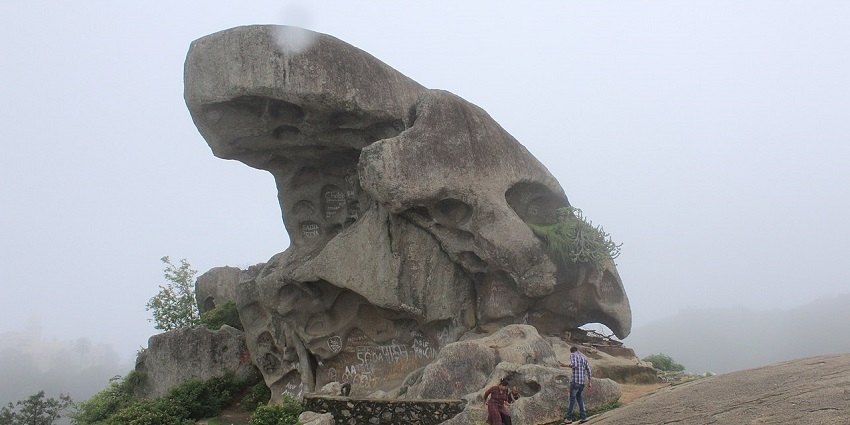
Photo: SUDHIR UPADHYAY JI / Wikimedia Commons
Toad Rock remains one of the most photographed places to visit in Mount Abu in August, and yet, in the monsoon, it reveals sides that often go unnoticed. Perched just above Nakki Lake, the rock gets its name from its shape. It looks like a giant toad about to leap into the water. The stairs leading up become slippery in August, but the effort pays off once you’re at the top. The breeze is stronger, the lake looks fuller, and the rain-soaked cliffs nearby take on a deeper colour. You can watch locals fishing from below or clouds crawling across the hills behind the town.
Timings: 24*7
Nearby Attractions: Nakki Lake, Maharaja’s Rock
8. Peace Park (Brahma Kumaris)
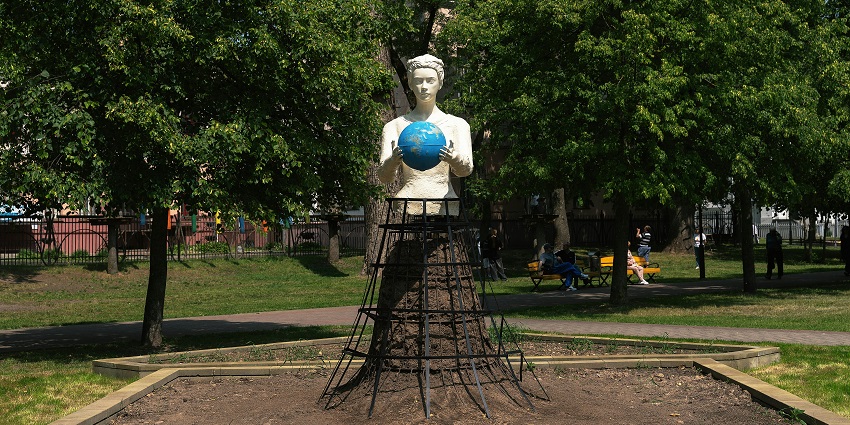
Photo: Siarhei Nester / Pexels / Image For Representation Only
Peace Park is one of the most serene places to visit in Mount Abu in August for those who prefer quiet over crowds. Maintained by the Brahma Kumaris, this park is not meant for sightseeing in the usual sense. It’s for slow walks, silent pauses, and soft conversations. In August, the garden paths are washed clean by rain and lined with colourful flowers that bloom better in the cooler weather. You’ll see meditation lawns, fountains, sculptures with spiritual quotes, and a small rock garden.
Timings: 8 AM – 7 PM
Nearby Attractions: Guru Shikhar, Shanti Stambh
9. Trevor’s Tank
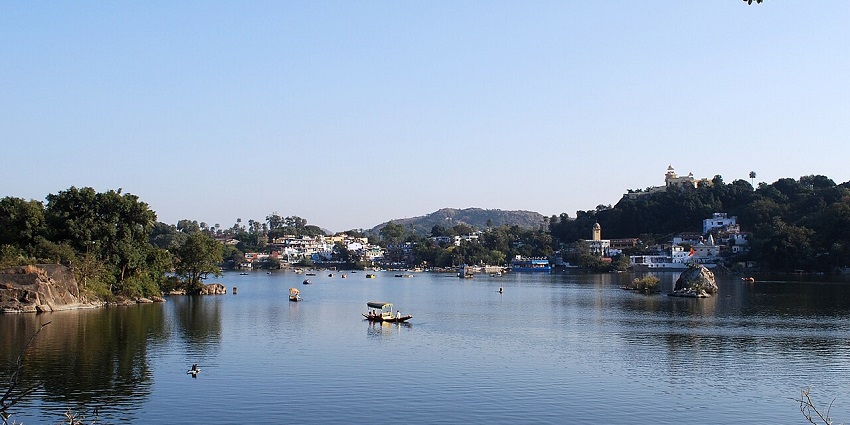
Photo: Sanyam Bahga / Wikimedia Commons / Image For Representation Only
Trevor’s Tank becomes one of the most scenic places to visit in Mount Abu in August, especially if you enjoy being close to nature without trekking too far. Originally built as a man-made reservoir for crocodile breeding, it now serves as a quiet green spot filled with bird calls and leafy trails. August adds a fresh layer of greenery around the tank’s edge, and the water level rises enough to draw crocodiles closer to the surface. You might not always spot them right away, but patient eyes often catch a pair of eyes just above the waterline.
Timings: 9 AM – 5 PM
Cost: ₹30 per person
Nearby Attractions: Mount Abu Wildlife Sanctuary, Crocodile Trail
10. Raghunath Temple
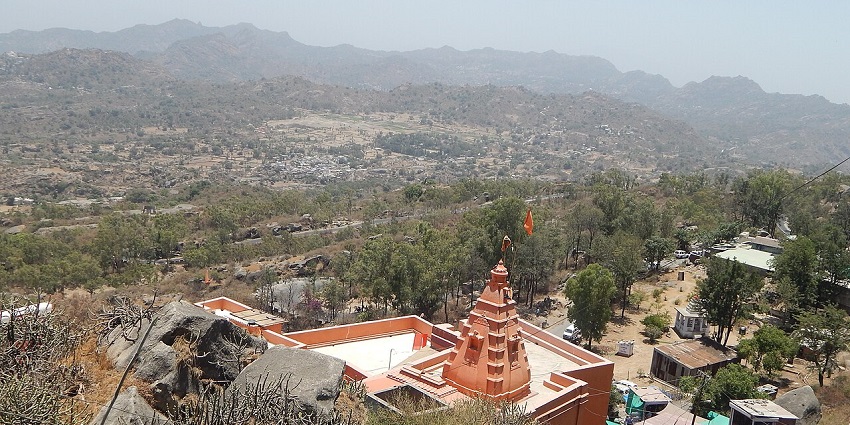
Photo: SUNIDHI CHOUDHARY / Wikimedia Commons
Raghunath Temple is one of the oldest and most spiritually rooted places to visit in Mount Abu in August. It is located near the southern edge of Nakki Lake and is often unnoticed compared to the louder attractions around. The climb up to the temple is short, and once you reach the top, you’re met with sweeping views of the lake and surrounding hills under passing clouds. The temple itself is dedicated to Lord Vishnu in his incarnation as Raghunathji, and the shrine is small but built with detail, including painted pillars, ancient stone idols, and a tiled roof that catches raindrops in rhythm.
Timings: 5 AM – 12 PM and 4 PM – 8 PM
Nearby Attractions: Toad Rock, Sunset Point
The places to visit in Mount Abu in August offer a slower, more grounded experience. Rain brings out the depth in the hills, the calm in the lakes, and a sense of quiet at every stop. If you’re planning to explore Rajasthan’s only hill station when it’s at its most natural, this is the right month. For more detailed travel ideas and well-timed itineraries, visit TripXL and plan your trip around the season, not the crowd.
Cover Photo: Romi Kalathiya / Unsplash


 WhatsApp
WhatsApp
 Twitter
Twitter









